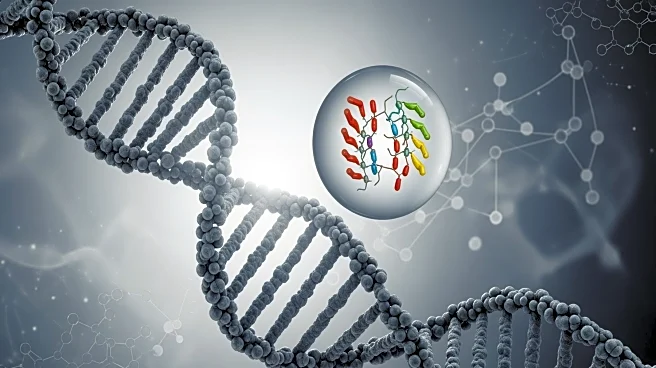What's Happening?
Researchers from the Research Center for Molecular Medicine of the Austrian Academy of Sciences, in collaboration with the University of Oxford, have discovered a new function of the enzyme NUDT5. This
enzyme acts as a molecular scaffold that regulates purine production, a key component in DNA synthesis. The study reveals that NUDT5 interacts with the enzyme PPAT, which catalyzes the first step of purine synthesis, effectively halting production when purine levels are high. This function does not rely on NUDT5's enzymatic activity, which is traditionally known for breaking down nucleotide derivatives. The findings suggest that NUDT5's structural role is crucial in maintaining metabolic balance within cells.
Why It's Important?
The discovery of NUDT5's role in purine synthesis regulation has significant implications for understanding metabolic control and its impact on health. This mechanism may contribute to drug resistance in cancer treatments, as cells lacking functional NUDT5-PPAT interaction show reduced sensitivity to certain chemotherapies. Additionally, the research connects folate metabolism, purine synthesis, and diseases caused by MTHFD1 deficiency, offering potential insights into new therapeutic approaches. Understanding this regulatory network could lead to advancements in treating rare genetic disorders and improving cancer drug efficacy.
What's Next?
Future research may focus on developing therapeutic strategies that target the NUDT5-PPAT interaction to enhance cancer treatment effectiveness. The chemical degrader dNUDT5, developed by collaborators at Oxford, provides a tool for further study of this pathway and may offer possibilities for protecting healthy cells from chemotherapy side effects. Continued exploration of NUDT5's structural role could lead to novel approaches in metabolic disease treatment and drug resistance management.
Beyond the Headlines
The study highlights the importance of structural regulation in cellular processes, challenging the traditional view that enzymes primarily function through chemical reactions. This insight into NUDT5's role as a structural regulator opens new avenues for research into enzyme functions and their implications for health and disease.











